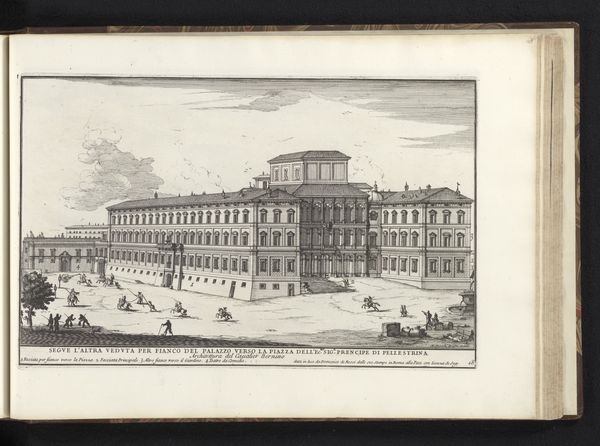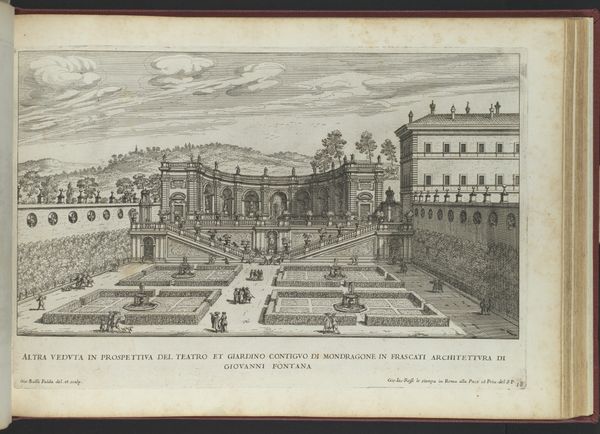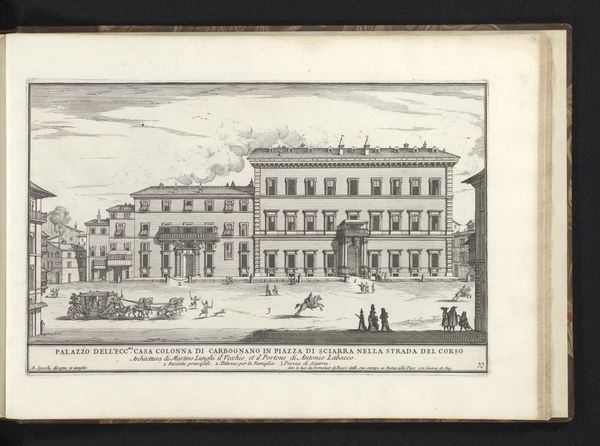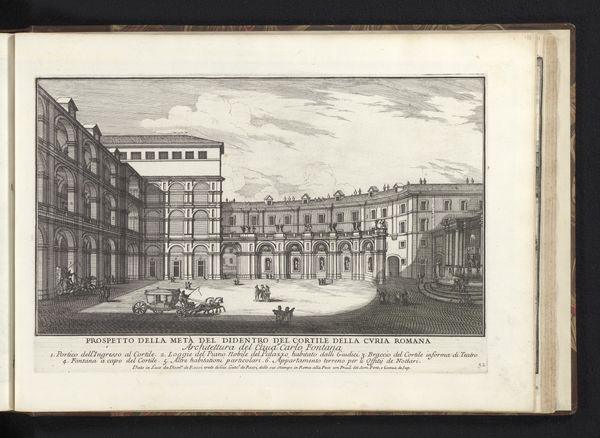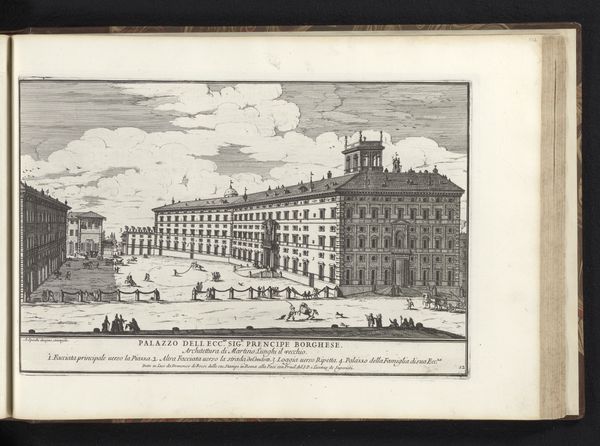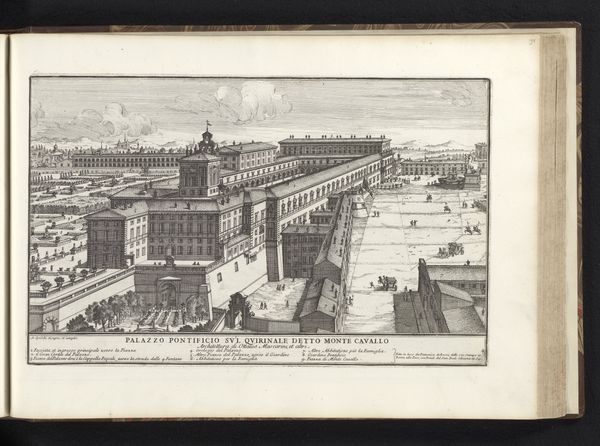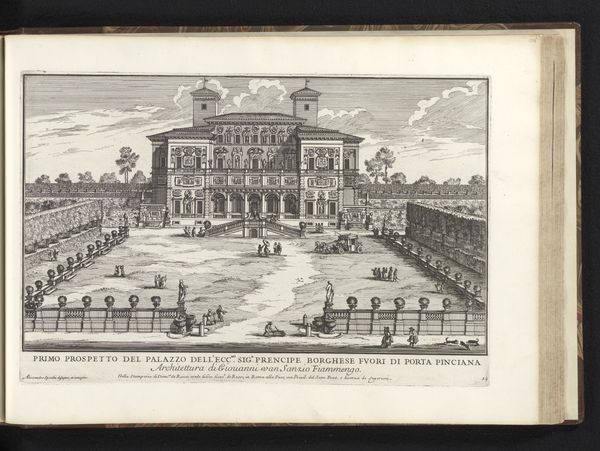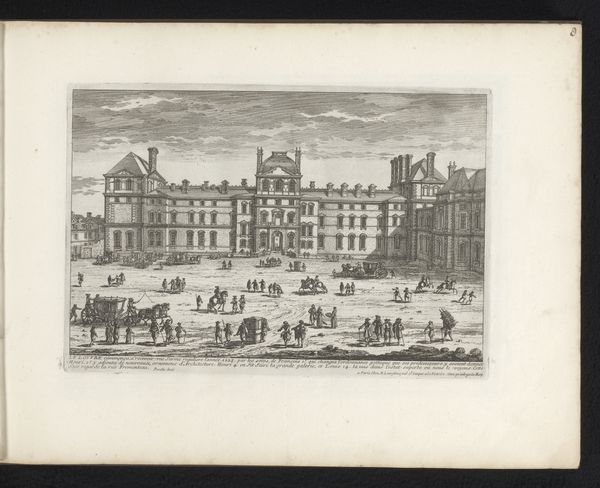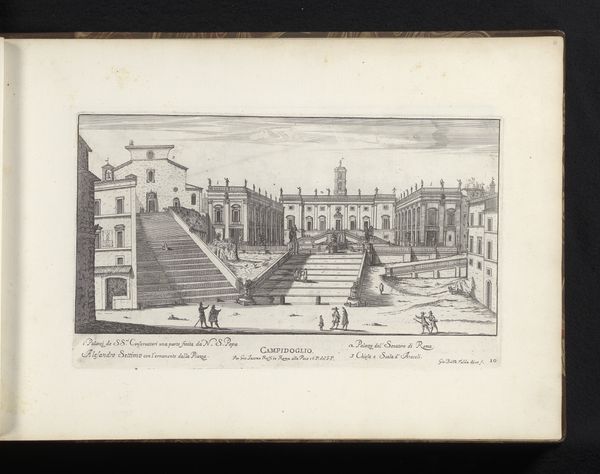
drawing, print, intaglio, graphite, engraving, architecture
#
drawing
#
baroque
# print
#
intaglio
#
line
#
graphite
#
cityscape
#
engraving
#
architecture
Dimensions: height 225 mm, width 370 mm
Copyright: Rijks Museum: Open Domain
Curator: Isn't this drawing of the Palazzo Barberini striking? Created around 1699 by Alessandro Specchi, it's rendered with graphite in such detail, capturing the Baroque essence of the place. Editor: There’s a melancholic beauty to it, I think. It feels a bit like peering into a faded dream of grandeur. All those tiny lines evoke a sense of overwhelming scale and permanence, doesn't it? Curator: Indeed. Specchi uses a linear style to articulate every stone, every window. See how he emphasizes the structure? He focuses less on color and more on form. Notice the geometry of the garden and the rhythm of the architectural elements—it speaks volumes about power and order. Editor: I'm fascinated by the almost ghostly quality. The etching gives it this faded, haunted quality, like it is whispering stories about people, carriages and dogs scurrying. The shadows too—they feel almost like memories clinging to the stone. What secrets do you think those walls hold? Curator: Oh, absolutely! And consider how Specchi's technique directs your gaze. He uses linear perspective masterfully, leading us from the detailed foreground through to the grand façade, culminating in the Roman sky above. The building, a testament to the Barberini family’s influence, its scale a form of architectural propaganda. Editor: Do you think there's a critique there as well? A sort of elegiac sadness reflecting on transience amidst such imposing grandeur? Maybe a little wink toward the hubris of humankind. It certainly makes you think. Curator: Perhaps! As formalists we might resist reading emotion into form but yes, as a humanist, the composition evokes deeper contemplation. Thank you for sharing your fresh perspective. Editor: Well, thank you! It's intriguing how simply lines and perspectives can open dialogues beyond mere appearances.
Comments
No comments
Be the first to comment and join the conversation on the ultimate creative platform.
